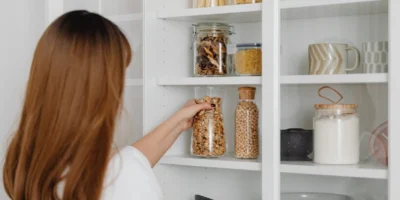Wood is a popular flooring. Again, there are opportunities for customization – for example, with colored oil primers. This gives your parquet floor a very unique look! Colored oil primers make it possible to give parquet floors an unmistakable character – for example with this trend color shown above called “Mystic Blue”. Our guide will show you how to color a wood floor with oil.
Wood is one of the oldest building materials that people use – and therefore never goes out of style. On the contrary, many builders and modernisers today attach great importance to natural resources with a positive eco-balance, which are largely free of disruptive emissions.
Floor coverings made of robust real wood parquet, for example, lend every room a special flair, while remaining durable and supporting a healthy indoor climate. And since many want individuality rather than a uniform look when designing their home, parquet can now be colored in a variety of ways and redesigned several times over the course of its service life.
How to sand and renovate a wood floor
Color a wood floor with oil: creative ideas for the floor
With special oil primers it is possible to decorate parquet – also retrospectively, if it has already been used for some years – creatively in a variety of desired colors and thus adapt it to the personal style of furnishing.
Parquet is a noble material. For convincing results, the oil should always be tinted by local specialist companies who can also individually advise on the various options. The oil primer is tinted as desired and, after application, reworked with a parquet sealant or parquet oil for a permanently attractive look.
To design large parquet surfaces with a new color, wants to be well considered. How does the color work in the room? What tone fits best to your own decor? How will the colour ‘take’ on the floor.
A good idea is to first have a small test surface processed. Some manufacturers have liquid color samples available. With the practical sponge head bottle, the paint can be applied directly to a test surface.
What You Will Need
Low-grit sandpaper
Mechanical buffer
Stiff bristle broom
Heavy duty cotton mop
Bucket
Electronic moisture meter
Paint roller, 3/8 inch nap
Colorfast pad
Squeegee
Absorbent towels
Clean white pad
Application Tips
Follow the label directions for the particular type of oil you use.
Use colored oil finishes if you do not wish to stain the floor.
Remove excess oil from the treated area with a white buffer pad on the mechanical buffer.
Warnings
Dispose of the oil-soaked towels in an open container—without a plastic liner—that sits outside the house or garage. Oil-soaked towels build up heat and spontaneously combust, causing major fires.
Wear eye protection.
Work in a well-ventilated area.
Step by step
- Sand the wood floor on its final sanding with a low-grit, fine, sandpaper pad. The aim is to leave a slightly loose grain in the wood floor into which the penetrating oil finish soaks. If you sand to an extremely fine finish, the oil will not penetrate.
- Thoroughly clean the floor of sanding residue, using a stiff-bristle broom, and follow with a dusting mop or a clean soft cloth tied around a broom.
- Mop the floor with the recommended wood cleaner for the type of wood or parquet floor you are colouring. During the mopping, regularly and thoroughly rinse the mop in clean water, and squeeze the excess out.
- Leave for several hours to dry. Use a moisture meter to test the dryness if you are unsure.
- Apply the oil finish liberally to the floor, according to label directions, using a paint roller with a 3/8-inch nap. Spread the oil finish onto large areas—250 square feet or less—and allow it to sit for approximately 15 minutes to soak into the floor.
- Buff the floor with a mechanical floor buffer loaded with a colorfast pad such as red or tan. The buffing action actually drives the finish into the floor for better absorption.
- Squeegee the excess oil off the floor. Where necessary, wipe the floor dry with clean absorbent rags or cloths – make sure they are lint-free!
- Load the mechanical buffer with a clean white pad and polish the floor until it has an even shine. Allow the oil to harden on the floor for at least six hours – more if the temperature is cold.
- Apply a thin coat of oil finish to the floor after the first coat has hardened. Pour a small amount of the oil finish onto a white buffing pad and buff it with the mechanical buffer. Do not allow foot traffic on the floor for at least six to seven hours.
 Gerhardt Richter is a writer and a trainer at trade technical colleges, specializing in carpentry, plumbing, mechanics and construction.
Gerhardt Richter is a writer and a trainer at trade technical colleges, specializing in carpentry, plumbing, mechanics and construction.




